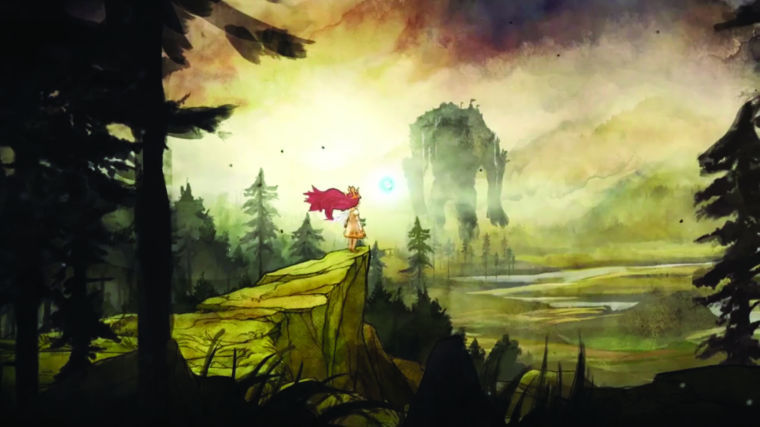Gamers enter the watercolored world of Lemuria in ‘Child of Light’
In “Child of Light” gamers become Aurora adventuring through Lemuria, a place where monsters and fairy tales are real
April 29, 2014
Ubisoft Montreal’s roleplaying game “Child of Light” beautifully draws players into the art of the game to tell the heartbreaking story of a lost young girl.
“Child of Light” is a classic Japanese-like roleplaying game starring an Austrian aristocrat, Aurora, as she wakes up in a dream-like world. This world is Lemuria, where nightmarish monsters and fairy tales are real.
This incredibly creative title blurs the lines between large triple-A developers and indie-style art video games.
The visuals shine bright in the darkest corners of this game, putting a watercolor, muted touch on the games environment. The watercolor environment of “Child of Light” makes it seem as if players are moving in a painting. As the art direction is influenced heavily by early 20th century Swedish illustrator John Bauer, the game looks as if it has been lifted directly from classic stories.
Using the UbiArt game engine — popular for its use in “Rayman Legends” — “Child of Light” has flowing and fluid 2-D models. Aurora seems to be one of the only 3-D models in the game, making her stand out in the dreamland of Lemuria. Her flowing red hair brings back memories of games like “Journey” and “The Banner Saga,” which are critically acclaimed for their unique art styles. The movements of the monsters and characters are truly whimsical.
A lot of the game performs as a 2-D platformer as Aurora and her firefly friend, Igniculus, must find their way through puzzles by pulling levers, pushing boxes and illuminating stained glass. Once the friends encounter one of the many creatures crawling through Lumeria, the game goes into the JRPG combat.
The turn-based system, similar to early “Final Fantasy” games, brings strategy and patience to this game. The first to reach the end of the timeline gets to attack first. Igniculus assists Aurora by trying to slow the creatures’ attacks on the timeline. I found this system provides a great timing element to the action, giving the strategy another layer.
This game goes beyond being an aesthetic masterpiece and adds complexities that made me feel invested. Skill trees and talent buffs introduce even more elements to this enveloping game.
When the conversation of video games and art arises, I would be surprised to not hear the title “Child of Light” mentioned.







